January 25, 2024
Review RecipeSage Butter Sauce
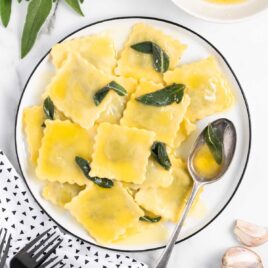
Table of Contents
- Sage Butter Sauce Ingredients
- Substitutions And Additions For Sage Butter Pasta Sauce
- How To Make This Sage Butter Sauce Recipe
- How to Serve Sage and Burnt Butter Sauce
- When To Serve Sage and Butter Sauce
- Storing Sage Butter Pasta Sauce
- Why We Love This Recipe
- Frequently Asked Questions
- More Recipes You’ll Love
- JUMP TO RECIPE
- Even More Recipes You’ll Love
Incredibly easy to make, sage butter sauce can be used as a flavorful drizzle over pasta, gnocchi, ravioli, chicken, fish or vegetables. A staple in Italian cooking, it adds a rich and savory taste with the distinct herbal notes of sage and creamy garlic butter.
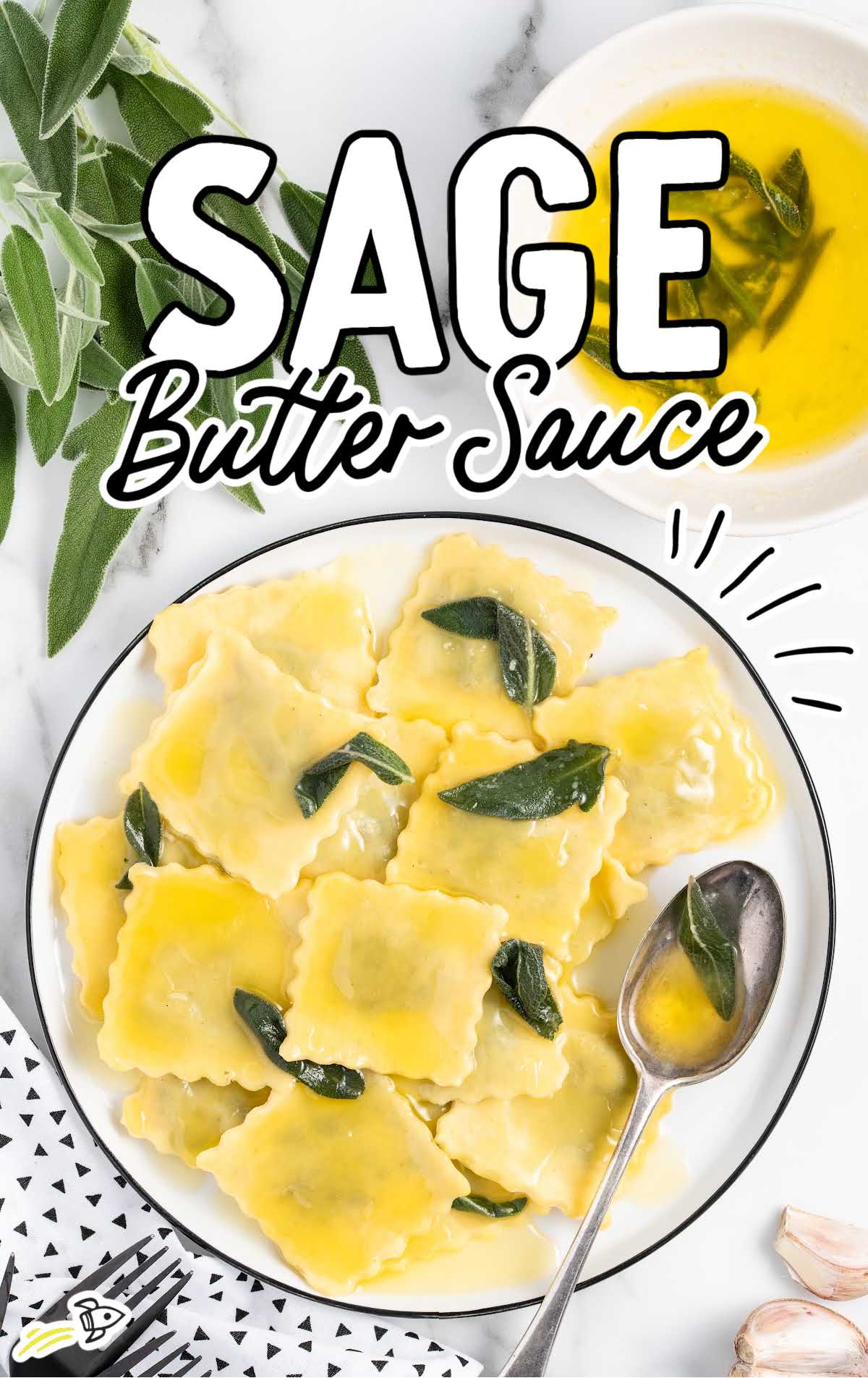
Sage Butter Sauce Ingredients
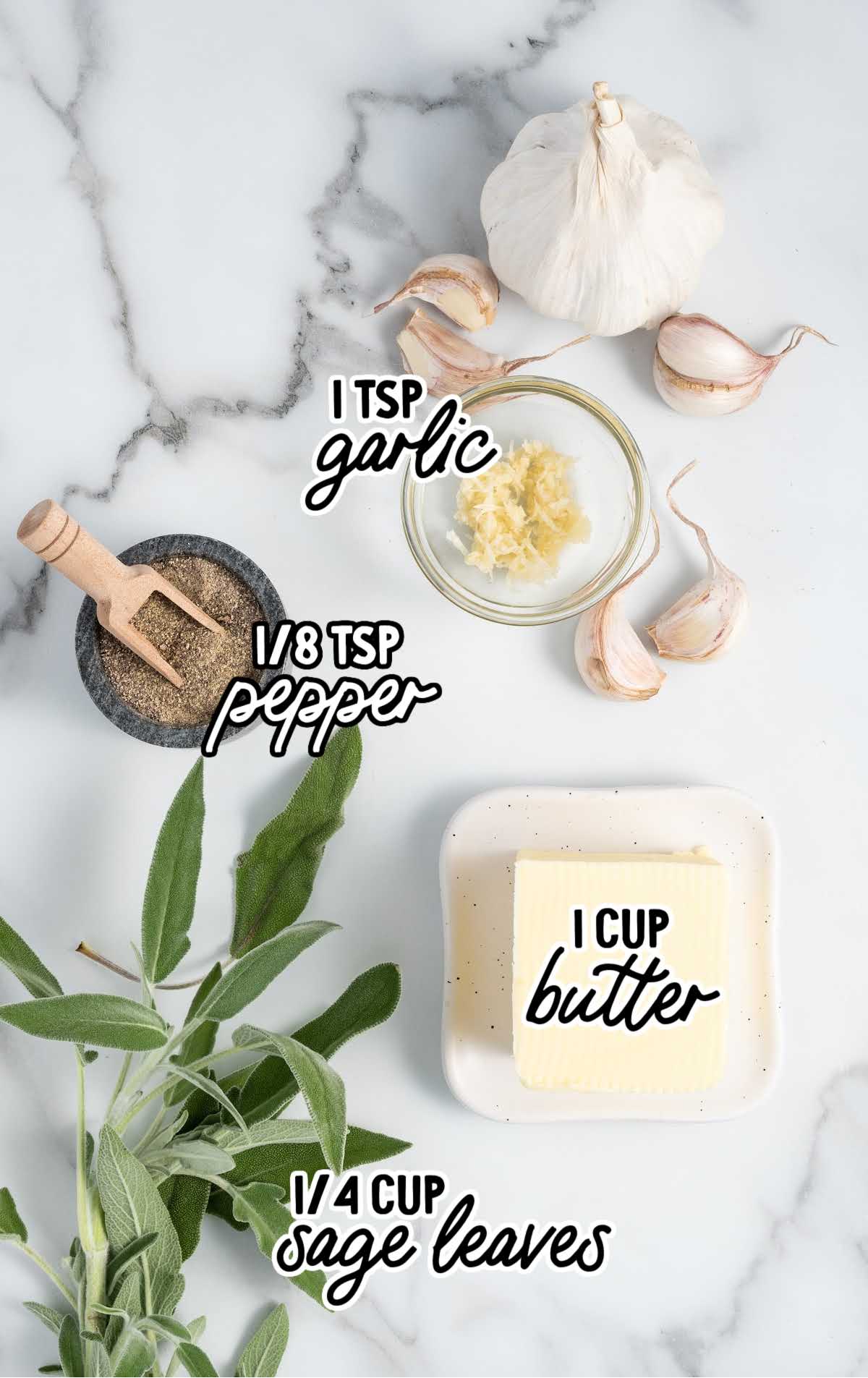
Let’s start by gathering the ingredients for our sage butter sauce. This recipe calls for:
- 1 cup of salted sweet cream butter, room temperature
- 1 teaspoon of freshly grated garlic (1 large clove)
- ¼ cup of fresh sage leaves, loosely packed (leaves removed from the stem)
- ⅛ teaspoon of black pepper
PRO TIP:
I purchase small containers of various fresh herbs in my local grocery store in the refrigerated area of the produce section.
A 0.5-ounce container will yield approximately a ¼ cup of sage leaves once the leaves are removed from the stems.
Substitutions And Additions For Sage Butter Pasta Sauce
SALTED SWEET CREAM BUTTER: If you’re watching your sodium intake, unsalted butter can be a great alternative. Just remember to adjust the seasoning to your taste.
FRESH GRATED GARLIC: For a milder garlic flavor, you can use roasted garlic instead of fresh. It adds a sweet, caramelized note to this easy sauce.
FRESH SAGE LEAVES: If sage isn’t your favorite herb, feel free to substitute it with rosemary or thyme. Both herbs pair well with butter and garlic.
BLACK PEPPER: For a smoky twist, try using smoked black pepper. It adds a new dimension to the simple brown butter sauce.
How To Make This Sage Butter Sauce Recipe
Making sage butter sauce is a straightforward process, but the key lies in the details. Let’s walk through the steps:
STEP ONE: Add the salted sweet cream butter, freshly grated garlic, sage leaves, and black pepper to a medium skillet on medium heat.
PRO TIP:
You can roughly chop your sage leaves if they are on the larger side. When measuring the sage, you do not want to tightly pack the measuring cup; the leaves should be loosely added.
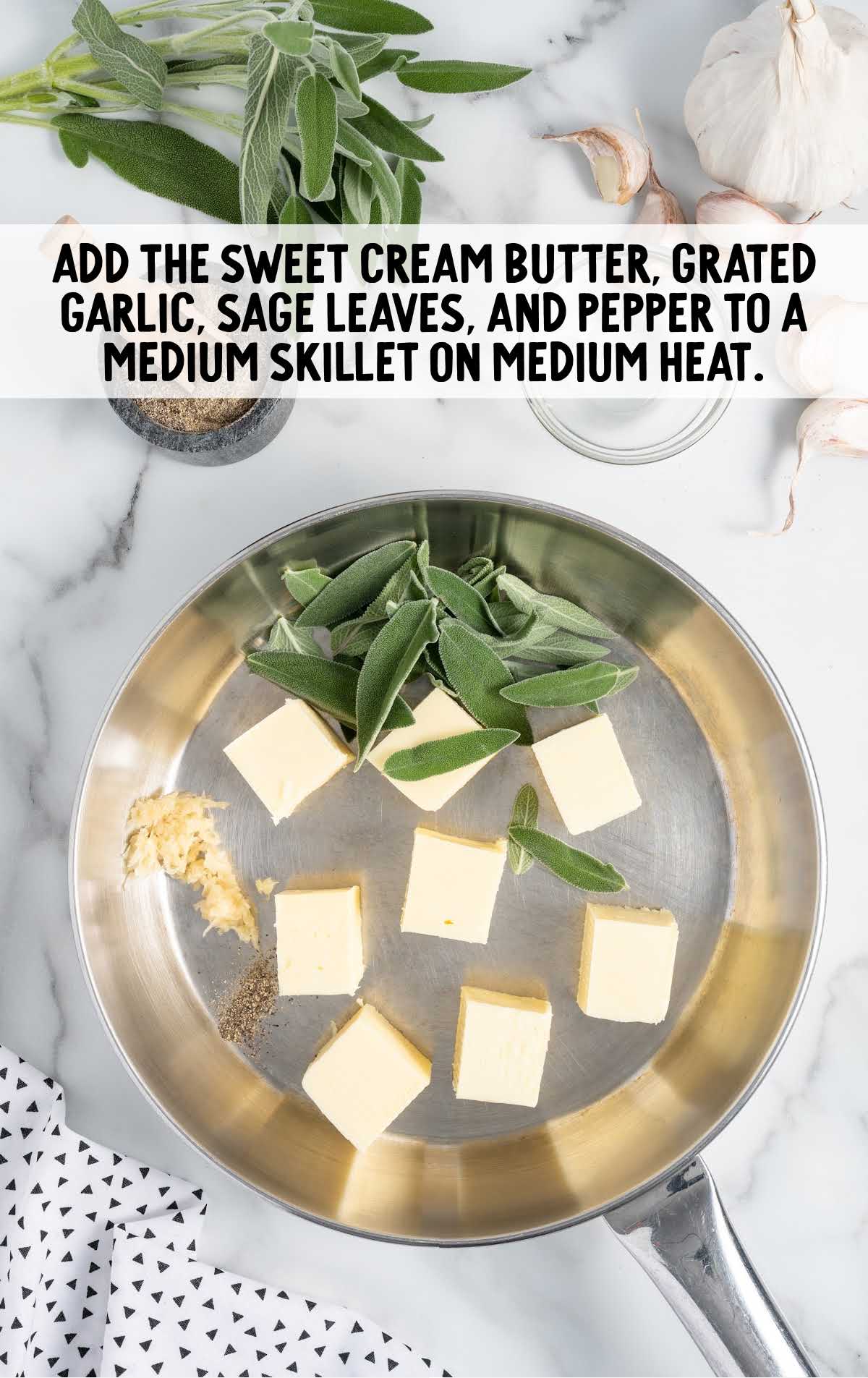
STEP TWO: Cook and melt the butter for four to six minutes or just until the butter starts to turn a very light brown.
Be sure to whisk or stir continuously, as you just barely want to brown the butter.
PRO TIP:
It’s important to whisk or stir continuously to prevent the butter from burning.
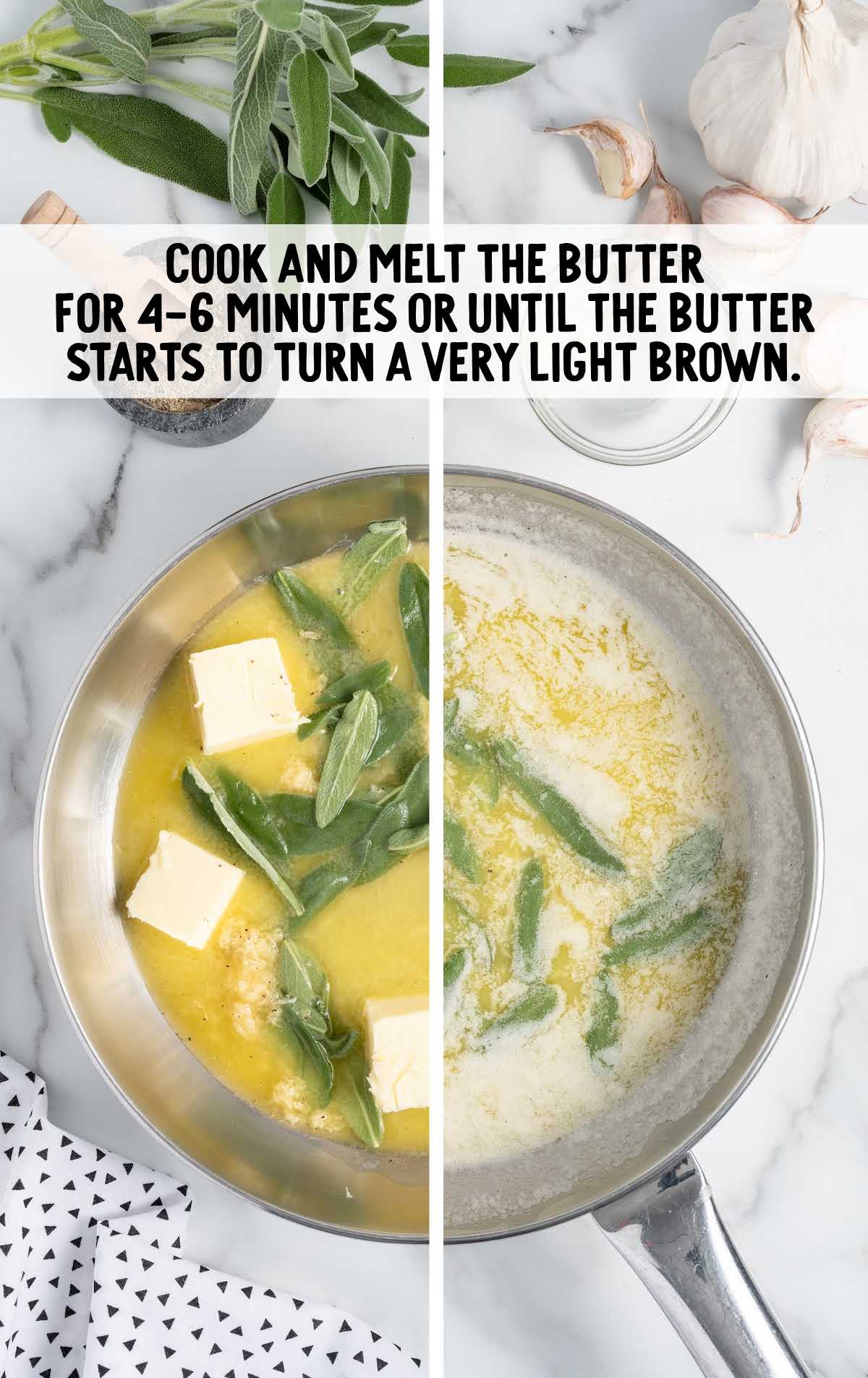
STEP THREE: Turn off the heat to the skillet and skim the milk solids from the surface of the sage butter sauce with a large metal spoon.
The milk solids will create a “foamy” layer on top of the melted butter.
PRO TIP:
You do not need to skim the milk solids (looks like foam) off the top of the sage butter sauce if you do not want to.
You will just need to whisk the butter really well before spooning it over your pasta.
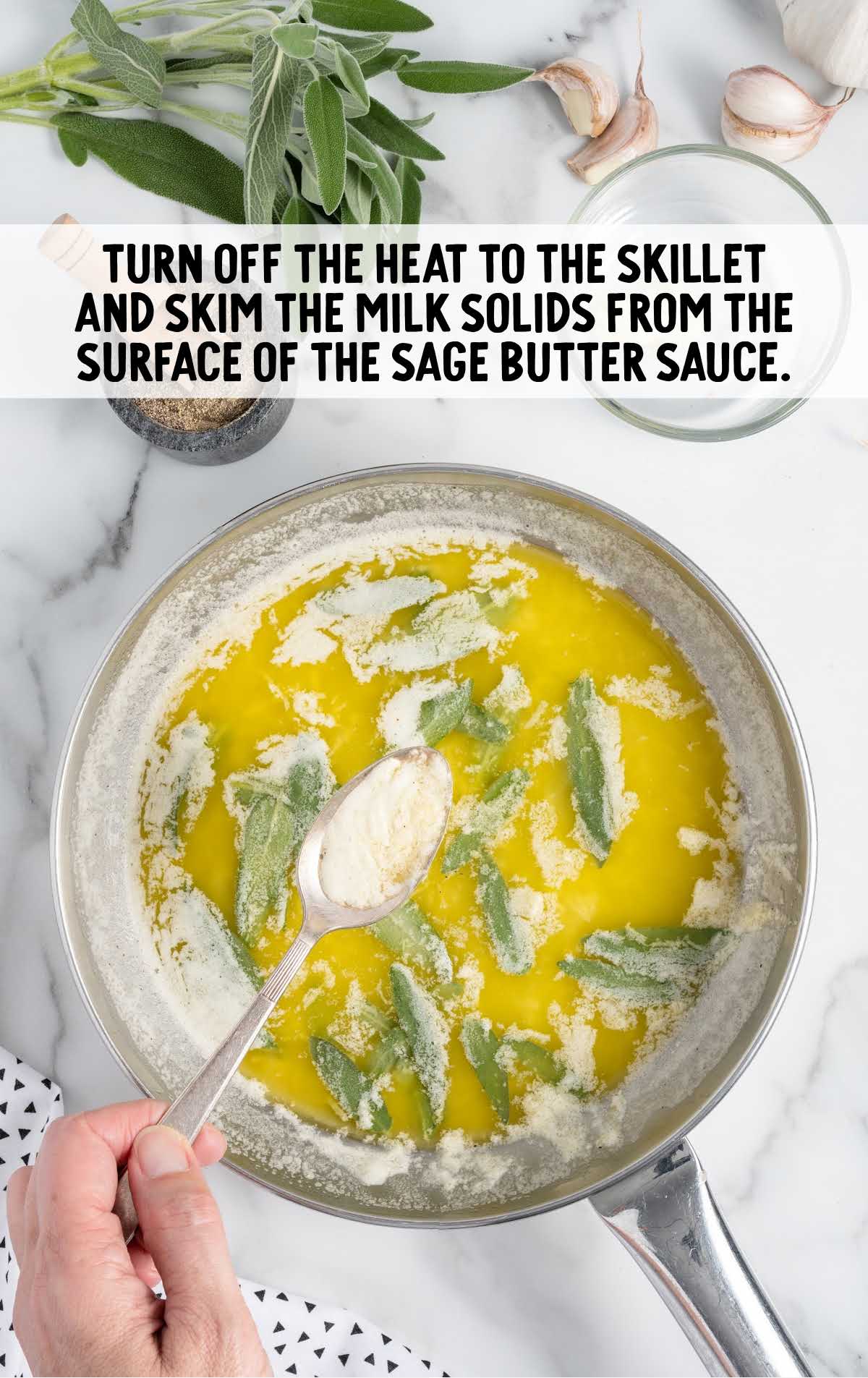
How to Serve Sage and Burnt Butter Sauce
Pasta Dishes: Sage butter sauce is a classic accompaniment for pasta dishes. It pairs exceptionally well with dishes like gnocchi, ravioli and tortellini.
Serve it as a sauce to coat the pasta, adding a sprinkle of Parmesan cheese for added flavor.
Chicken and Poultry: This sauce complements chicken and poultry dishes beautifully.
You can drizzle it over roasted or grilled chicken or serve it alongside dishes like chicken piccata or chicken saltimbocca.
Beef: This sauce can also be served with steak. The rich, buttery flavor complements the savory taste of the meat.
Fish and Seafood: Sage butter sauce can also be a delicious addition to seafood dishes.
It pairs nicely with mild-flavored fish like sole or tilapia. Simply spoon the sauce over the cooked fish for an extra layer of flavor.
Vegetables: Sage butter sauce can elevate the flavor of steamed or sautéed vegetables. You could also drizzle it over roasted vegetables.
It works well with vegetables like asparagus, Brussels sprouts or green beans as well as root vegetables like potatoes, carrots and parsnips.
Bread: Spread some sage butter sauce on a piece of warm, crusty bread for a simple yet satisfying snack.
When To Serve Sage and Butter Sauce
Special Occasions: Sage butter sauce is a great choice for special occasions and romantic dinners.
Its rich and elegant flavor makes it suitable for celebrating birthdays, anniversaries, or other significant events.
Thanksgiving and Holiday Meals: Sage butter sauce is a classic choice for holiday meals, particularly Thanksgiving.
It complements dishes like roast turkey or stuffing, adding a savory and aromatic element to the meal.
Weeknight Dinners: Despite its elegance, sage butter sauce is also perfect for weeknight dinners when you want to add a touch of gourmet flavor to a simple meal.
It’s quick and easy to prepare, making it a convenient choice for busy evenings.
MORE SAUCE RECIPES
Add our homemade cream cheese pasta sauce and Alfredo sauce recipes to your cooking repertoire for two more ways to take the flavor of your dishes up a notch.
Storing Sage Butter Pasta Sauce
Our sage butter sauce can be stored and reheated, allowing you to enjoy it at a later time.
MAKE AHEAD: You can make this sauce ahead of time and store it in a lidded container in the refrigerator. Just rewarm it in a skillet on low heat when ready to use.
IN THE FRIDGE: This sauce will last for up to one week when refrigerated. Store it in a lidded container to maintain its freshness.
IN THE FREEZER: While it’s best to consume this sauce fresh, it can be frozen if necessary. Store it in a freezer-safe container, and it should last for up to a month.
REHEATING: To reheat, simply place the sauce in a skillet and warm it over low heat. If you’ve frozen the sauce, let it thaw in the refrigerator overnight before reheating.
Why We Love This Recipe
There are many reasons why we love this brown butter sage sauce:
FLAVOR: The combination of butter, garlic, and sage creates a rich, aromatic flavor that’s hard to resist.
SIMPLICITY: Despite its gourmet appeal, this sauce is incredibly easy to make. Even novice cooks can whip it up with ease.
CUSTOMIZABILITY: This recipe is open to variations. You can experiment with different herbs or add more spices to suit your taste.
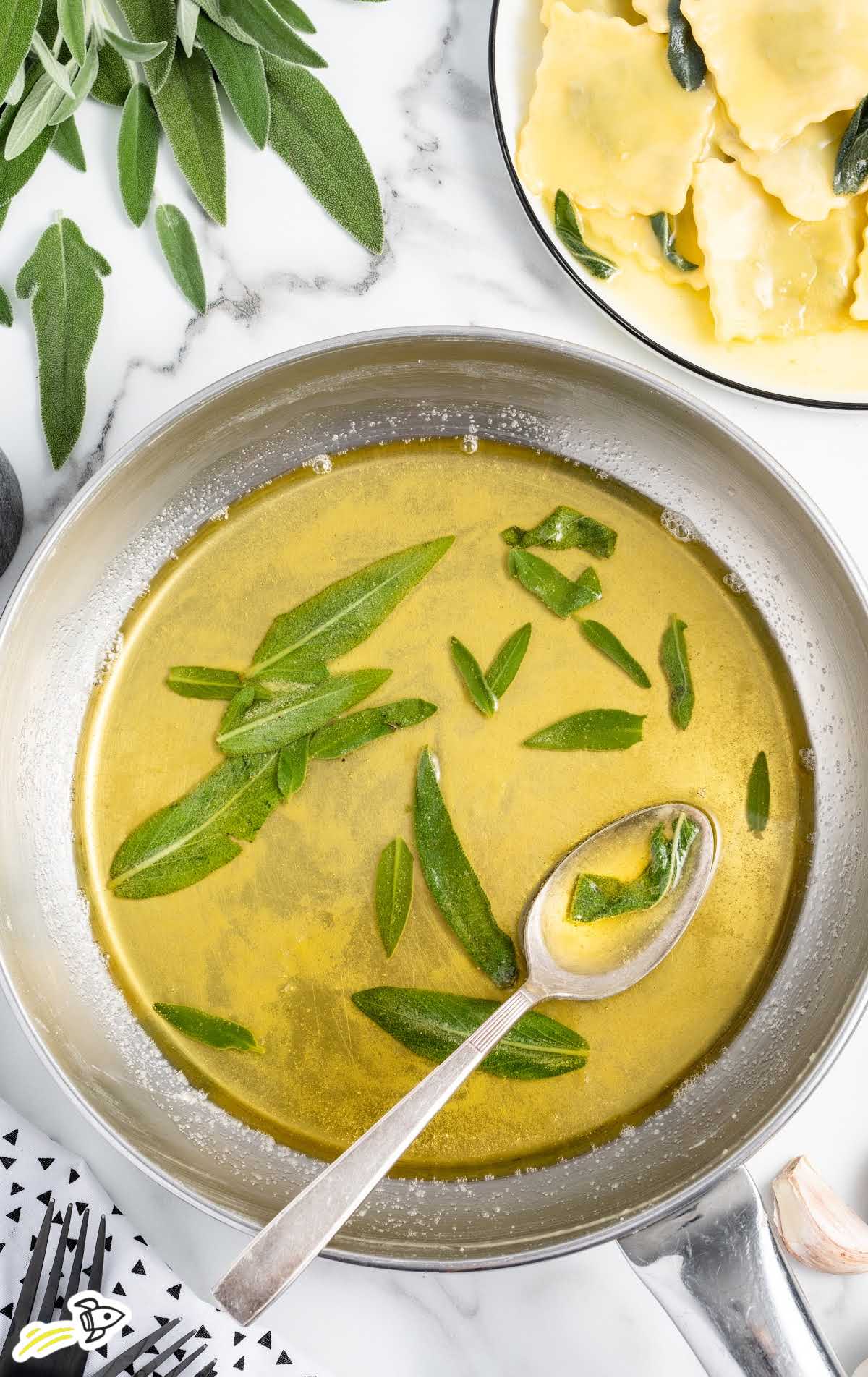
Our sage butter sauce is a versatile, flavorful, easy-to-make addition to your culinary repertoire.
Its rich, browned butter flavor, enhanced by the aromatic sage and warm garlic, can elevate any dish.
Frequently Asked Questions
While fresh sage is recommended for its vibrant flavor, you can use dried sage if fresh isn’t available. Use half the amount, as dried herbs are more potent.
You can use unsalted butter. Just remember to adjust the seasoning to your taste.
The garlic adds a subtle depth of flavor to the sauce, but you can omit it if you’re not a fan of garlic.
This simple sauce can be frozen. Store it in a freezer-safe container, and it should last for up to a month.
To reheat, simply place the sauce in a skillet and warm it over low heat. If you’ve frozen the sauce, let it thaw in the refrigerator overnight before reheating.
More Recipes You’ll Love
- Reese’s Peanut Butter Fudge
- Black Magic Cake
- No Bake Pumpkin Pie
- Caramel Apple Dip
- Loaded Scalloped Potatoes
- Smashed Red Potatoes Recipe
- Candied Carrots

Sage Butter Sauce
Ingredients
- 1 cup salted sweet cream butter, room temperature
- 1 teaspoon fresh grated garlic, 1 large clove
- ¼ cup fresh sage leaves, loosely packed (leaves removed from the stem)
- ⅛ teaspoon black pepper
Instructions
- Add the salted sweet cream butter, freshly grated garlic, sage leaves, and black pepper to a medium skillet on medium heat..
- Cook and melt the butter for 4 to 6 minutes or just until the butter starts to turn a very light brown. Be sure to whisk or stir continuously as you just barely want to brown the butter.
- Turn off the heat to the skillet and skim the milk solids from the surface of the sage butter sauce with a large metal spoon. The milk solids will create a “foamy” layer on top of the melted butter.
Notes
- I purchase small containers of various fresh herbs in my local grocery store in the refrigerated area of the produce section. I found that the 0.5-ounce containers will yield approximately a scant ¼ cup of sage leaves (once I removed the leaves from the stems), which is perfect for this recipe. If you grow your sage in an herb garden, you only need a scant ¼ cup of leaves.
- Start by gathering all the ingredients. Ensure your butter is at room temperature for easy melting. Grate your garlic clove and remove the sage leaves from their stems. A lemon zester works great for grating the garlic clove.
- You can roughly chop your sage leaves if they are on the larger side. When measuring the sage, you do not want to tightly pack the measuring cup; the leaves should be loosely added.
- It’s important to whisk or stir continuously to prevent the butter from burning.
- You do not need to skim the milk solids (looks like foam) off the top of the sage butter sauce if you do not want to. You will just need to whisk the butter really well before spooning it over your pasta. Once you remove the milk solids from the butter, you will have clarified butter.

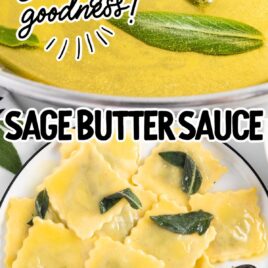
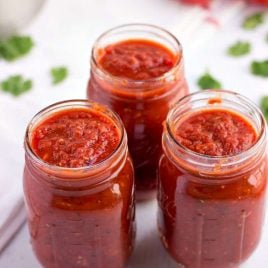
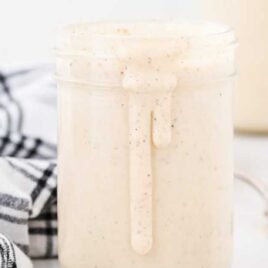










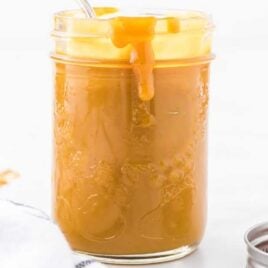
Leave a Comment